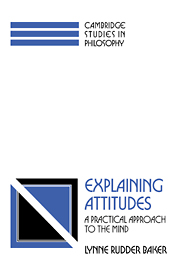6 - Belief without reification
Published online by Cambridge University Press: 05 June 2012
Summary
The Standard View of the attitudes – shared by reductive, nonreductive, and eliminative materialists – takes beliefs, if there are any, to be constituted by brain states. In Part I, I criticized the Standard View directly, in both its eliminativist and noneliminativist versions. In Part II, I examined a central motivation for the Standard View – namely, the view that the causal explanatoriness of belief requires the Standard View – and found that the conception of causal explanation on which that motivation rests is too restrictive. To accommodate causal explanations that are successfully deployed in science and in everyday life, I proposed a general test for causal explanatoriness, which, I argued, belief explanations easily pass. In this chapter, I ask, How should the attitudes be understood if they are to play their explanatory roles? If beliefs are not brain states, what are they? I offer what I am calling ‘Practical Realism’ as an alternative to the Standard View.
WHAT ARE BELIEFS?
According to Practical Realism, believing that p is an irreducible fact about a person. Although it may be extended to things other than organisms, Practical Realism (like the Standard View) in the first instance applies to paradigmatic believers: human beings. The first claim of Practical Realism is that a belief is a global state of a whole person, not of any proper part of the person, such as the brain.
- Type
- Chapter
- Information
- Explaining AttitudesA Practical Approach to the Mind, pp. 153 - 192Publisher: Cambridge University PressPrint publication year: 1995

